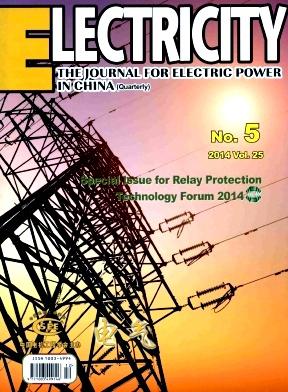Optimized and Sustainable PV Water Pumping System with Three-Port Converter, a Case Study: The Al-Kharijah Oasis
引用次数: 0
Abstract
In this paper an efficient, compact, and cheap power source design for an off-grid PV water pumping system is investigated. The proposed system consists of a PV array, battery, three-port converter (TPC), three-phase voltage source inverter, and induction motor pump. Power is extracted from PV sources during the daytime and used to charge batteries through the three-port converter, then used later to supply load during the nighttime. An intelligent MPPT method is used to obtain PV maximum power; a jellyfish optimization technique with different control algorithms is used to optimize and tune controllers’ parameters among the system. Different modes for the TPC are discussed depending on PV power availability. The proposed system is simulated to assess system performance under different conditions; also the system is efficient with reduced number of components than conventional converters. A complete unified power management over PV input port, battery port, and load port has occurred for all operation modes. At all operation modes, the system has been feeding load without any unmet loads. A real case study in Al-Kharijah oasis is studied and simulation results are listed; for the Dom case DC bus ripple factor voltage percentage equals 0.8%, in the Dim case equals 3%, and in the Siso mode equals 9%.使用三端口转换器的优化和可持续光伏水泵系统,案例研究:Al-Kharijah 绿洲
本文研究了一种高效、紧凑、廉价的离网光伏水泵系统电源设计。拟议的系统由光伏阵列、电池、三端口转换器(TPC)、三相电压源逆变器和感应电机泵组成。白天从光伏源提取电能,通过三端口转换器为电池充电,然后在夜间为负载供电。采用智能 MPPT 方法获取光伏发电的最大功率;采用水母优化技术和不同的控制算法来优化和调整系统中控制器的参数。根据光伏发电的可用性,讨论了 TPC 的不同模式。对所提出的系统进行了仿真,以评估不同条件下的系统性能;与传统转换器相比,该系统减少了元件数量,效率更高。在所有运行模式下,光伏输入端口、电池端口和负载端口都实现了完全统一的电源管理。在所有运行模式下,系统都能为负载供电,没有任何未满足的负载。对 Al-Kharijah 绿洲的一个实际案例进行了研究,并列出了仿真结果;在 Dom 模式下,直流母线电压纹波系数为 0.8%;在 Dim 模式下,纹波系数为 3%;在 Siso 模式下,纹波系数为 9%。
本文章由计算机程序翻译,如有差异,请以英文原文为准。
求助全文
约1分钟内获得全文
求助全文

 求助内容:
求助内容: 应助结果提醒方式:
应助结果提醒方式:


